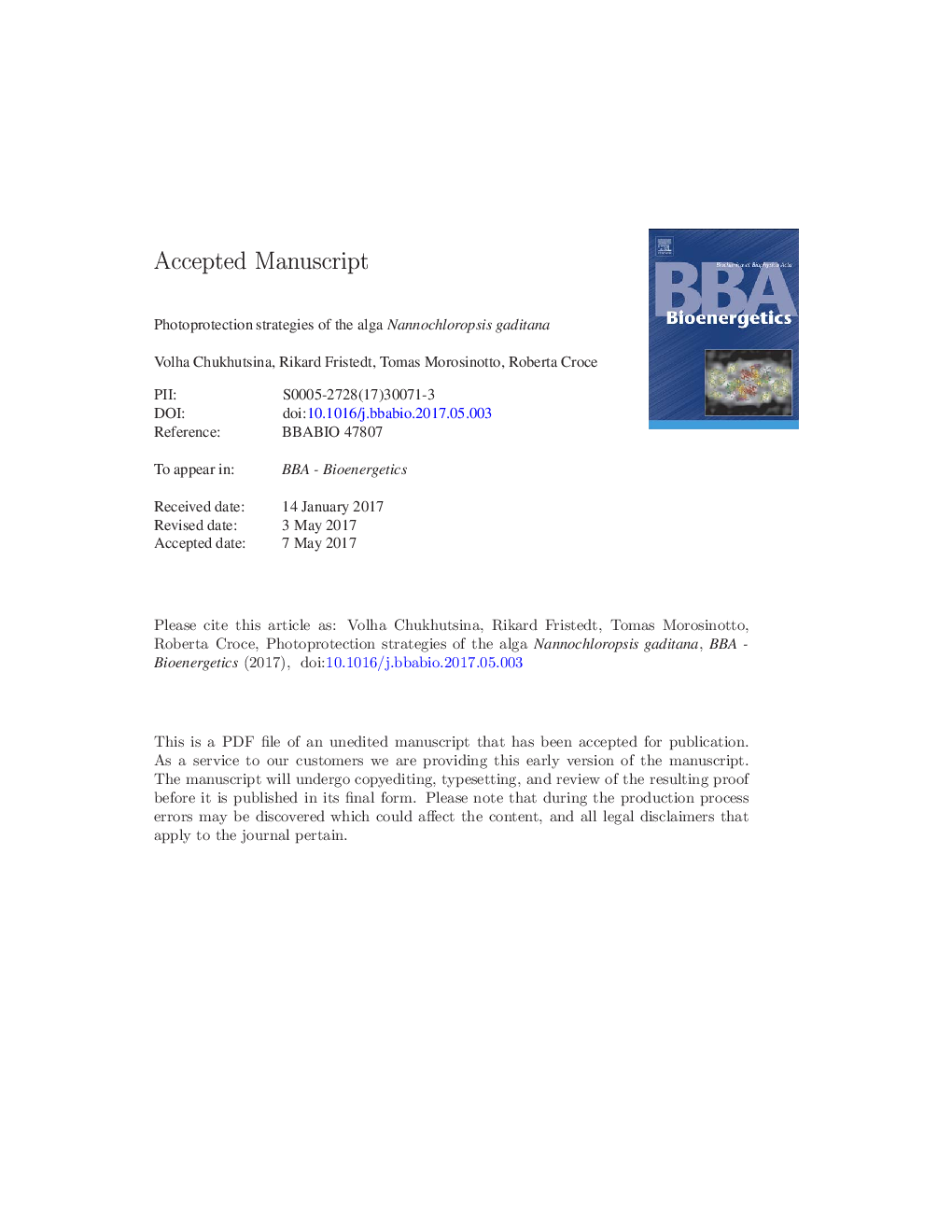| Article ID | Journal | Published Year | Pages | File Type |
|---|---|---|---|---|
| 5507196 | Biochimica et Biophysica Acta (BBA) - Bioenergetics | 2017 | 44 Pages |
Abstract
Nannochloropsis spp. are algae with high potential for biotechnological applications due to their capacity to accumulate lipids. However, little is known about their photosynthetic apparatus and acclimation/photoprotective strategies. In this work, we studied the mechanisms of non-photochemical quenching (NPQ), the fast response to high light stress, in Nannochloropsis gaditana by “locking” the cells in six different states during quenching activation and relaxation. Combining biochemical analysis with time-resolved fluorescence spectroscopy, we correlated each NPQ state with the presence of two well-known NPQ components: de-epoxidized xanthophylls and stress-related antenna proteins (LHCXs). We demonstrated that after exposure to strong light, the rapid quenching that takes place in the antennas of both photosystems was associated with the presence of LHCXs. At later stages, quenching occurs mainly in the antennas of PSII and correlates with the amount of de-epoxidised xanthophylls. We also observed changes in the distribution of excitation energy between photosystems, which suggests redistribution of excitation between photosystems as part of the photo-protective strategy. A multistep model for NPQ induction and relaxation in N. gaditana is discussed.
Keywords
LHCSRViolaxanthinTCSPCDASNannochloropsisChlantheraxanthinDDXFWHMDTXNPQExcitation energy transferLHCNon-photochemical quenchingEETDiatoxanthinDiadinoxanthinZeaxanthinChlorophyllPhotosystemTime-correlated single photon countingdecay-associated spectraPhotosynthesisreaction centerXanthophyll cycleoptical density
Related Topics
Life Sciences
Agricultural and Biological Sciences
Plant Science
Authors
Volha U. Chukhutsina, Rikard Fristedt, Tomas Morosinotto, Roberta Croce,
